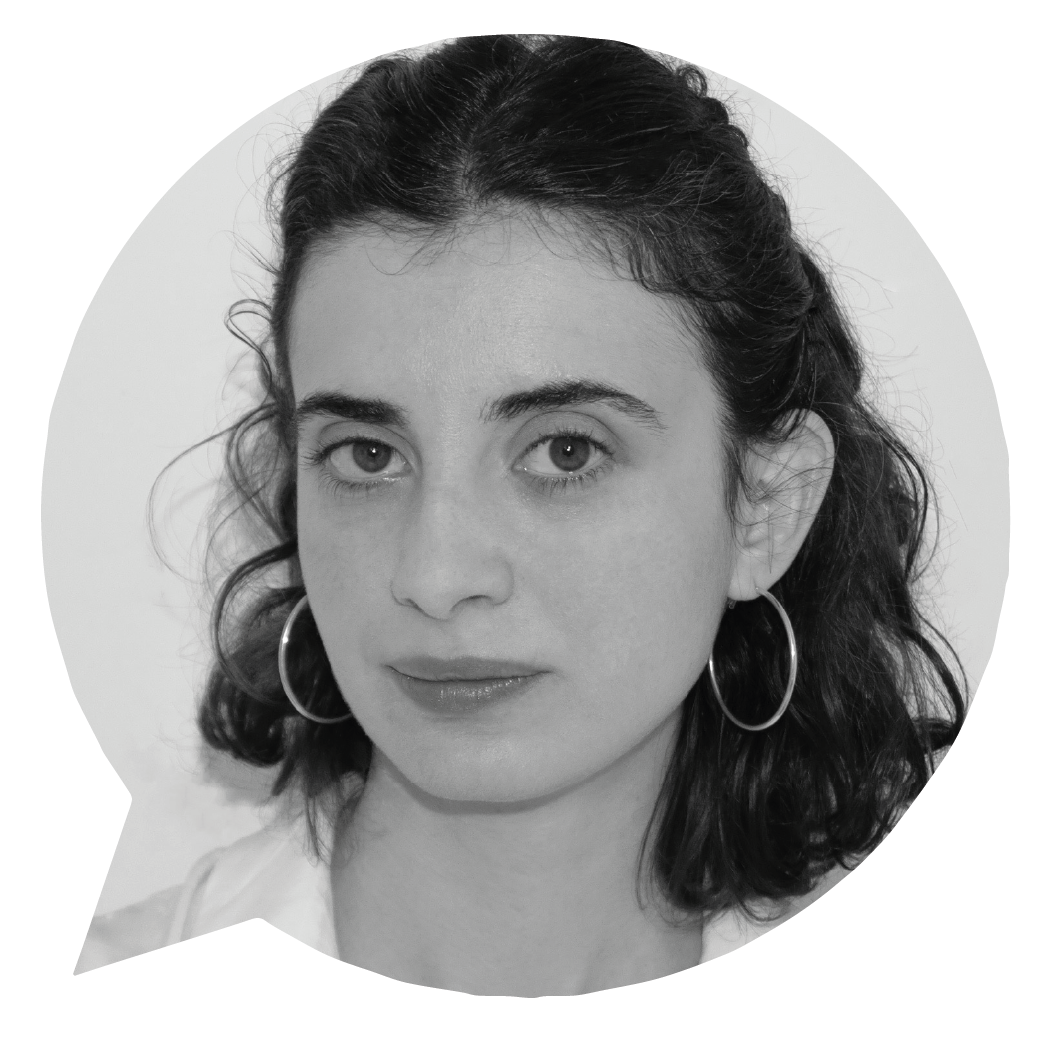Conversations
Conversations is a space for discussions and dialogue with invited guest writers, artists, critics, and curators on relevant topics, current events and exhibitions, modes of working, forms of funding, etc. It is divided into three sections;
︎︎︎ Texts in the form of reviews and articles.
︎︎︎ Podcast episodes with invited guests.
︎︎︎ K-oh-llective blog entries.


كريم قطّان
ترجمة: ياسمين حاج
هذه اللامبالاة الفاسقة ونزع الإنسانيّة عنّا هو ما يجبرُنا على توثيق ووصف كلّ شيء، كبيرًا كان أم صغيرًا، للتأكّد من أنّ الناس تدرك ما هو على المحكّ: نودّ أن نقول «لكنّ هذا كان طفلًا» و«هذا بالغًا». ولم يكن عليه موت الميتة الشنيعة في مدينة مدمّرة بالكامل. كان يجب أن يكبر ويترعرع بجانب البحر، ولعلّه كان سيكون سبّاحًا ماهرًا وراسبًا في الرياضيات أو كان سيكبر ليحبّ السيّارات أو الطّبخ. ونريد أن نقول «كان هذا مبنًى سكنيًّا، وهذا مطعمًا على شاطئ البحر، وهذا بيتًا وحديقته، حيث لعب أحدهم وتشاجر مع أحدهم في المطبخ، وكلّ هذا ذهب بلا عودة». نريد أن نقول إنّ لهؤلاء النّاس أسماء ووجوه وحياة وأصدقاء ينعونهم، ذلك إن تمكّنوا من البقاء على قيد الحياة؛ وهذه هنا مدن، مدن كاملة، برمّتها. مدن وبلدات حقيقيّة، كانت في الأمس مدنهم وبلداتهم، قد أصبحت الآن مقابر. وفي هذه الأثناء يبرّر الخبراء على التلفزيون وقوع آلاف الموتى بصفتهم أضرارًا جانبيّة – لكنّنا نريد أن نقول إنّ هذا هو محض نشوانٍ، نشوان محوِ شاطئِ بحرٍ وعائلاتٍ وتاريخٍ وقصصٍ ومدنٍ. ا
في الإعلام نرى غزّة تُصوَّرُ تجريدًا، مساحةً مُصمَّمةً لموتٍ عنيفٍ للشعب المُجرَّد الذي يقطنها.ا

Whose Humanities? Western Academia’s Persisting Complicity
Sanabel Abdelrahman
Translation: Ebrahim Bahaa El-din
Western academia tends to extract martyrdom from all contexts but real life. Whether in the United States of America, Europe, or other contexts in which white hegemony and supremacy could potentially be upheld, Western academia lingers on the potentialities of death, love, poetry, pluralism, sacrifice, nobility, discipline, liberation, and commitment without investigating Israel’s settler-colonial prerequisites to Palestinian martyrdom and its tragic materialization. Thus, the Palestinian martyr is transformed into an abstract entity that provokes Western academia’s curiosity and fetishism regarding this blurred time-space in which a human being willingly accepts death - the annihilation of their very being- as a price for a dignified life for future Palestinians. The Palestinian martyr becomes an impossible thing, an unfathomable feat, while being pigeonholed in non-real, non-believable, non-understandable spheres of being and of dying. The Palestinian martyr in Western academia is seldom perceived in the flesh and blood to begin with, and their death, therefore, is not a human death. For this imaginary, all Palestinian martyrdom is the stuff of fiction at best; at worst, an act of awesome terror.
︎︎︎ Continue reading...
︎︎︎ للقراءة باللغة العربية


أحمد شوقي حسن
في تلك اللحظة نجح مرتكب الحادثة أن يخطف انظار الجميع، بنشره حالة من التوتر والارتباك غمرت كل من في المتحف، فقد فتح في عقولهم نافذة مليئة بالفضول؛ لماذا قام بتلك الفعلة وورط الجميع في هذا السياق؟ إن مثل هذه الأفعال المناهضة للمتحفة حين حدوثها على حين غرة تضع الجمهور إجباريًا في سبيل السعي وراء أسئلة عن موقعهم من المستقبل، فإلى إي مدى يُمكن طرح سؤال عن هذا الأمر في مؤسسة من شأنها صناعة التاريخ؟ ولماذا اختار ذلك الرجل أن يأتي هنا في لحظة حرجة كلحظة الذروة تلك ويفعل فعلته أمام هذا الحشد الهائل من الجمهور، ولم يأتي مثلاً في وقت متأخر عندما ينفض الجميع أو يُغلق المتحف؟ ولماذا اختار مؤسسة كهذه وليس مكان آخر خاص مباشرة بموضوع قضيته عن البيئة والمناخ؟ علمًا بأن المتحف من المؤسسات التي بادرت في القرن الحادي والعشرين على تحويل ممارساتها المهنية وهياكلها البنيوية لتتماشى مع قضية التنمية المستدامة واشكاليات تغير المناخ. علاوة على ذلك فإن المتاحف حول العالم تعتبر من أبرز المؤسسات التي أطلقت في الآونة الأخيرة نداءات مفتوحة ودعوات تكليف كمساهمة في تمويل وانتاج مشاريع فنية تدعم قضايا بيئية، ويمكن بسهولة التعرف على ذلك من خلال تصفح مواقعهم الرسمية عبر الإنترنت.ا
إذن؛ لماذا تستهدف المتاحف بالتحديد من قبل نشطاء يدافعون عن قضايا المناخ والبيئة؟

Art critics in Cairo: An alternative plot
Mai Elwakil
Art writers are expected to accumulate knowledge and practical experience, to build networks with artists, spaces and platforms, to present their work. We are expected to prove ourselves worthy of documenting, and analyzing artworks and practices with nuance; to conduct research and initiate or engage in discussions that stir the waters; to question the positioning of artistic practices in local, regional and international scenes when relevant, and to lay the groundwork for a possible future historiography. It is difficult to truly claim these roles without acknowledging the fragility of writers’ positions and the various jobs they perform to continue working in the field, while enjoying a level of independence and credibility. I, hence, chose, in this supposed new diagram, to focus on the less talked about economics and labor of art writing in relation to a writer’s social network.
︎︎︎ Continue reading...
︎︎︎ للقراءة باللغة العربية



حوار بين هدى ذكري وعمرو عامر
عمرو: ليس لدي تصور واضح تمامًا، لكن أعتقد أن البداية قد تكون في تحديد هدف مشترك، ومن ثم تكوين مجموعات صغيرة من الأفراد. لا يهم أن تتفق هذه المجموعة على كل شيء، باستثناء الرغبة في خلق دوائر تتحرك بدافع ذاتي نحو التعلم. من الممكن تخيل دوائر من أجيال وممارسات مختلفة تسعى كل منها لتكوين معارف نابعة من احتياج حقيقي. يمكن تخيل أن هذه الدوائر تتقاطع بلا شك، وأن هذا التقاطع سيخلق علاقات مركبة ويتيح تبادل من نوع مختلف.ا
هدى: أتخيل أنه من الممكن أن نتعامل مع عملية التعلُّم الجماعي كجزء أساسي من ممارستنا الفنية. فاذا اعتبرنا أننا مضطرون في كل الأحوال لإنتاج تراكم معرفي إذا أردنا الاستمرار، فيمكننا تخيل شكل جماعي من هذه العملية. على أن نوليه نفس القدر من الاهتمام والالتزام الذي نعطيه لعمليات الإنتاج والبحث عن دعم، دون الاضطرار لإثبات جدواها بشكل مستمر عن طريق إخراج منتج.ا
هدى: أتخيل أنه من الممكن أن نتعامل مع عملية التعلُّم الجماعي كجزء أساسي من ممارستنا الفنية. فاذا اعتبرنا أننا مضطرون في كل الأحوال لإنتاج تراكم معرفي إذا أردنا الاستمرار، فيمكننا تخيل شكل جماعي من هذه العملية. على أن نوليه نفس القدر من الاهتمام والالتزام الذي نعطيه لعمليات الإنتاج والبحث عن دعم، دون الاضطرار لإثبات جدواها بشكل مستمر عن طريق إخراج منتج.ا

Thinking in Conversation: Writing on Contemporary Art
Ismail Fayed
There is definitely an intersection between writing about the arts and curating, although the two might not always align. Writing about art might need a certain distance and introspection, not necessarily available or desirable for a curator who is most often working within a specific timeframe. But also there is the problem within most contemporary curatorial practices where art speak obfuscates meaning and drowns the significance of the work in obtuse prose. It's a running joke among most audiences how difficult curatorial writing has become over the last few decades, alienating the audience and undermining the reception of the work. I think a curator must have a vision of how the artworks are going to be received and what their possible meaning might be, and at the same time be able to communicate that with the widest audience possible.
︎︎︎ Continue reading...
︎︎︎ للقراءة باللغة العربية


أحمد شوقي حسن
جاء الرد على هذا السؤال مفاجئ إلى حد كبير. كنت أتوقع أن تأخذني تلك الإجابة إلى خطة مستقبلية محتملة ربما تقتضي تطبيق آليات لإقامة عروض للفنانين بمختلف أعمارهم. لذلك قبل سماع الإجابة تبادر إلى ذهني أسئلة أخرى أكثر تفصيلًا عن إمكانية شرح وتفنيذ طرق تقديم الفنانين للحصول على فرصة عرض في المتحف.ا
أعتقد أن المتحف يُعتبر الوحيد في مصر اللي ما زال بيستقبل مقتنيات حديثة الإنتاج من أعمال الفنانين بمختلف أعمارهم إلى عامنا هذا. لذلك كان وما زال دائمًا هناك طموح متجدد أيضًا عند الفنانين أن يحظوا بفرصة اقتناء من المتحف لأعمالهم. لأن الأمر ده ببساطة بالنسبة لفنان شاب مثلًا يعني له الكثير خصوصًا في وقت ندرت فيه حركات النقد والأرشفة. لذلك حابب افهم منك اكتر عن الاقتناء المتحفي، بمعنى أنه كيف يتم اختيار الأعمال؟ أو إيه هي معايير عملية الاختيار؟ ومن هم الأشخاص المكلفين بهذه العملية؟
أعتقد أن المتحف يُعتبر الوحيد في مصر اللي ما زال بيستقبل مقتنيات حديثة الإنتاج من أعمال الفنانين بمختلف أعمارهم إلى عامنا هذا. لذلك كان وما زال دائمًا هناك طموح متجدد أيضًا عند الفنانين أن يحظوا بفرصة اقتناء من المتحف لأعمالهم. لأن الأمر ده ببساطة بالنسبة لفنان شاب مثلًا يعني له الكثير خصوصًا في وقت ندرت فيه حركات النقد والأرشفة. لذلك حابب افهم منك اكتر عن الاقتناء المتحفي، بمعنى أنه كيف يتم اختيار الأعمال؟ أو إيه هي معايير عملية الاختيار؟ ومن هم الأشخاص المكلفين بهذه العملية؟

We Need Mentors
Amira Hanafi
In June 2013, I launched a page on Facebook to share opportunities for artists in Egypt. I had recently taught a workshop for building an artistic career: writing an artist statement, putting together a project proposal, and compiling a budget. People taking part in the workshops had a common question: Where can I find opportunities for which I’m eligible to apply? I put together a document with some links to sites and sent it around, and it was the beginning of what would later grow into an online platform with more than ten thousand followers, mostly local.
When the members of K-oh-llective asked me to write this piece and approached me as the founder of “Opportunities for Egypt Artists”, they wondered, “What would drive an artist to set up a platform for sharing information?” There’s no straightforward response; the answer is probably as knotty as my creative practice, as contradictory as my personality, as skewed as my life path.
︎︎︎ Continue reading...
︎︎︎ للقراءة باللغة العربية

On Artists and Institutional Stigma
Mays Albaik
I began writing this essay to answer a question: what do institutions want from artists? But I want to use this opportunity to think beyond this antagonistic dichotomy. Art institutions are made up of individuals who want to make art happen. The question should be, what do artists, collectively, want from a collectively organized group of creative practitioners?
This might seem like an abstract train of thought to follow in comparison to the question I received, but it doesn’t need to be. To think of institutions as a group of people would affect how an artist can approach any relationship with institutions. Applying for a grant? Think of the selection jury reading your application as a group of people, not as a faceless and nameless mass of regulations and bureaucracy. An application is an argument to convince a group of people that they want to work with you on achieving what you want to achieve.
︎︎︎ Continue reading...
︎︎︎ للقراءة باللغة العربية